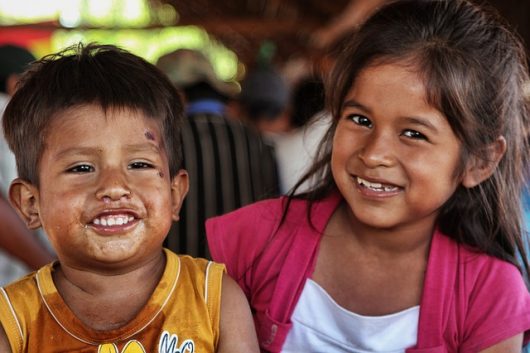Top 10 Facts About Hunger in Bolivia

Bolivia is a landlocked, plurinational South American country, sharing a border with five other South American countries. It continues to address issues of both poverty and hunger.
10 Facts About Hunger in Bolivia
- Bolivia’s constitution guarantees the right to adequate food.
- Of Bolivia’s 12.4 million people, most (71%) live in urban areas, although poverty and food insecurity are greatest in rural Bolivia.
- In 2022, 15.6% of Bolivians were reported to be living in poverty (using the$6.85/day International Poverty Line), compared to 26% in poverty in Latin America and the Caribbean. However, as measured by Brazil’s National Poverty Line, more than 36% of Brazilians were poverty-stricken. Various factors in 2022, including the elimination of COVID-19 mitigation measures, led to an increase in food prices, and the poorest Brazilians, who spend a higher proportion of their income on food, faced increased food insecurity.
- According to the World Food Programme (WFP), which has been working in the country for over 60 years, Bolivia is one of the top 10 most biodiverse countries in the world but is severely impacted by extreme weather conditions. This affects agriculture and access to food, which in turn impacts poverty and food insecurity, especially for rural and indigenous people. It has been suggested that unless the country implements measures to adapt to climate change, there could be a 22% increase in Bolivians’ hunger vulnerability by 2050.
- In Fall 2023, El Nino led to a state of emergency or disaster in 83% of Bolivia’s municipalities, and severe drought and extremely high temperatures and water shortages affected agricultural production. The July-September planting season could not be completed and over 500 head of livestock died. Indigenous peoples and rural communities were most impacted, with the livelihood of almost two million affected. An increase in anemia and in malnutrition were the result of poor sanitation and hygiene resulting from water shortages.
- Bolivia ranks 71 out of the 125 countries in the 2023 Global Hunger Index, with a score of 15.6 putting it in the second lowest category, a “moderate” level of hunger. This is an improvement of 12 percentage points since 2000, moving the country out of the “serious” category.
- Although the GHI indicators for Bolivia all declined between 2000 and 2015, since then, undernourishment and child stunting have increased by a few percentage points to just under 20%. Child wasting and child mortality have remained at a low point of approximately 2-3%.
- The Sustainable Development Goals Fund reported that 40% of rural Bolivian children suffer from chronic malnutrition—2.5 times higher than urban children.
- Bolivia has made moderate progress toward achieving the United Nations Sustainable Development Goal 1, No Poverty, but is still classified as having remaining challenges in that area, with its improvement insufficient to attain the desired goal. The Sustainable Development Report sees major challenges for Bolivia to achieve SDG 2, Zero Hunger, particularly undernourishment, stunting and obesity.
- The 2022 Global Nutrition Report noted that Bolivia has implemented food-based dietary guidelines, legislation for mandatory salt iodization, a sugar-sweetened beverage tax, policies to reduce salt/sodium consumption and saturated fatty acid intake. The report also identified additional areas of national food and noncommunicable disease policy still to be addressed.
The World Food Programme in Bolivia
WFP has a four-pronged approach in Bolivia: resilience building, nutrition, indigenous farmer support, and capacity strengthening. Resilience building includes cash assistance; and activities such as small animal husbandry, fish production and handicrafts.
Nutrition support has included studies employed by the Ministry of Health and Sports to develop undernutrition and obesity strategies, as well as a Restaurant Week campaign focused on the consumption of nutritious local food products.
Small-scale Indigenous farmers experiencing food insecurity have received cash assistance and education addressing techniques, entrepreneurship and e-commerce.
Capacity strengthening has focused on developing digital information tools for the food system, including the online platform ICCOM that was integrated into governmental websites, providing food security data at all levels—municipal and community, departmental and national.
The WFP’s 2023 Annual Country Report for Bolivia noted direct assistance to over 30,000 people with an indirect benefit to four million people via national programs and policies. In 2023, the first year of a five-year strategic plan (2023-2027) was implemented, with one target being SDG 2. WFP’s many accomplishments include reaching over 17,000 food-insecure people in several areas, construction of water assets in 22 municipalities, installation of satellite internet connections in rural communities and e-commerce training. Their work has incorporated a gender approach to increase economic empowerment for women. Support has included a multi-year grant from the European Union and a grant from the Russian Federation.
– Staff Reports
Photo: Pixabay
Updated: August 5, 2024
